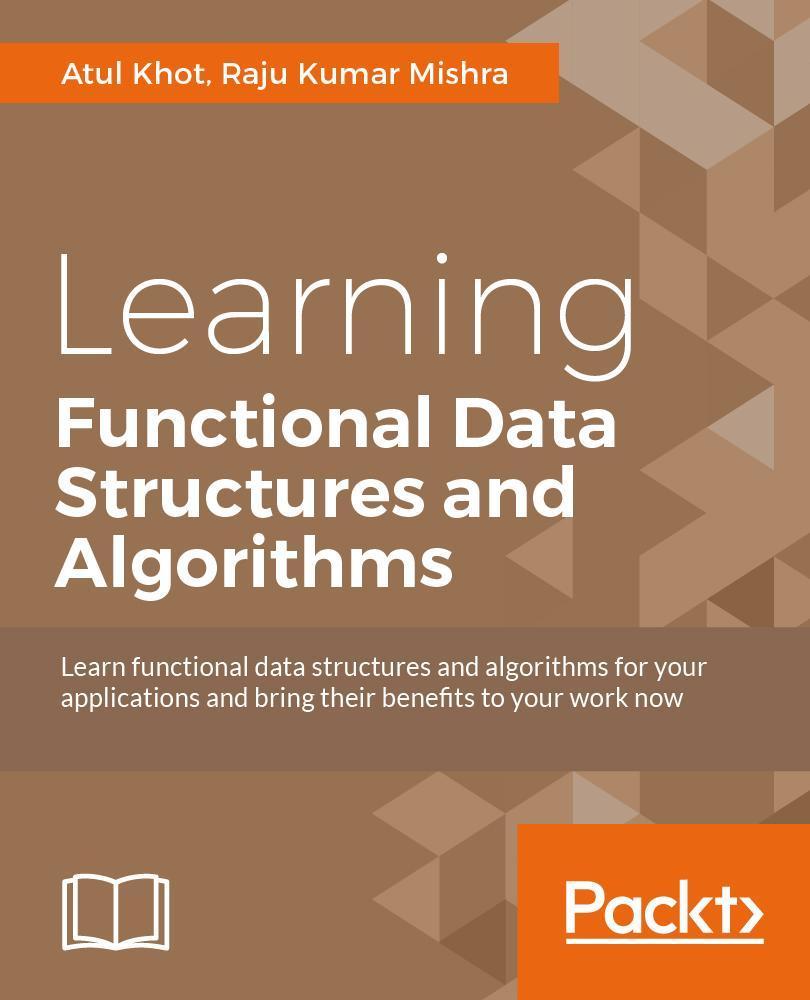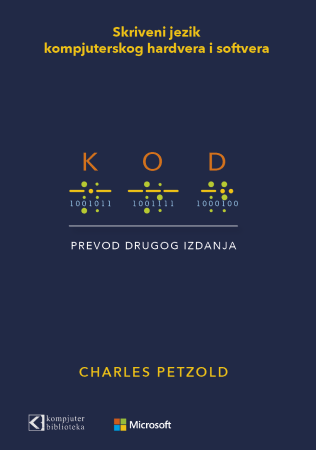
Autor: Atul Khot, Raju Kumar Mishra
Broj strana: 318
ISBN broj: 9781785888731
Izdavač:
PACKT PUBLISHING ![]()
Godina izdanja: 2017.
 |
 |
 |
 |
 |
||||
Functional data structures have the power to improve the codebase of an application and improve efficiency. With the advent of functional programming and with powerful functional languages such as Scala, Clojure and Elixir becoming part of important enterprise applications, functional data structures have gained an important place in the developer toolkit. Immutability is a cornerstone of functional programming. Immutable and persistent data structures are thread safe by definition and hence very appealing for writing robust concurrent programs.
How do we express traditional algorithms in functional setting? Won’t we end up copying too much? Do we trade performance for versioned data structures?
This book attempts to answer these questions by looking at functional implementations of traditional algorithms.
It begins with a refresher and consolidation of what functional programming is all about. Next, you’ll get to know about Lists, the work horse data type for most functional languages. We show what structural sharing means and how it helps to make immutable data structures efficient and practical.
Scala is the primary implementation languages for most of the examples. At times, we also present Clojure snippets to illustrate the underlying fundamental theme. While writing code, we use ADTs (abstract data types). Stacks, Queues, Trees and Graphs are all familiar ADTs. You will see how these ADTs are implemented in a functional setting. We look at implementation techniques like amortization and lazy evaluation to ensure efficiency.
By the end of the book, you will be able to write efficient functional data structures and algorithms for your applications.
Atul Khot learned to program by reading C code and figuring out how it works. He wrote a lot of C++ code and then moved to Java and Scala. An avid open source advocate, he loves scripting languages, clean coding, and is always ready to learn a new command-line trick. He currently works at Webonise Labs, Pune. Atul was also a panelist of Dr. Dobb's Jolt Awards. Last but not least, he is a trekking enthusiast and also a big foodie.
Raju Kumar Mishra is a consultant and corporate trainer for big data and programming. After completing his B.Tech from Indian Institute of Technology (ISM) Dhanbad, he worked for Tata Steel. His deep passion for mathematics, data science, and programming took him to Indian Institute of Science (IISc). After graduating from IISc in computational science, he worked for Oracle as a performance engineer and software developer. He is an Oraclecertified associate for Java 7. He is a Hortonworks-certified Apache Hadoop Java developer, and holds a Developer Certification for Apache Spark (O'Reilly School of Technology and Databriks), and Revolution R Enterprise-certified Specialist Certifications. Apart from this, he has also cleared Financial Risk Manager (FRM I) exam. His interest in mathematics helped him in clearing the CT3 (Actuarial Science) exam.
Budite prvi koji će ostaviti komentar.

Popust cena:
2100.00 rsd

Popust cena:
2460.00 rsd
© Sva prava pridržana, Kompjuter biblioteka, Beograd, Obalskih radnika 4a, Telefon: +381 11 252 0 272 |
||